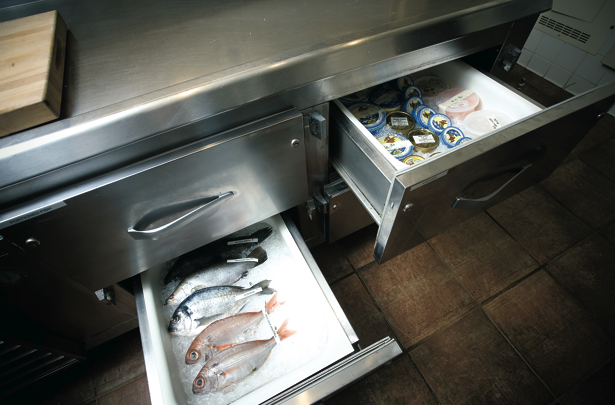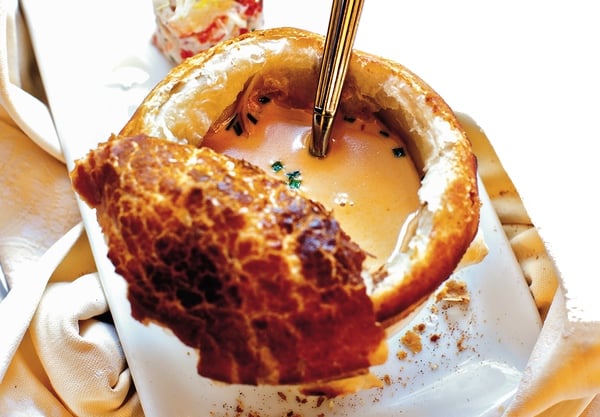One of the hallmarks of a top chef is a mania for perfection. Patrick O’Connell’s borders on obsession. Everything in his spotless kitchen at the Inn at Little Washington is lined up, labeled, stacked, and dated—nothing is even a centimeter out of place. And he’s the region’s only chef who files his fresh fish in a refrigerated, compartmentalized contraption as large as a compact car. It’s called a “fish file.”
Who really needs a filing system for fish? Even O’Connell admits that the $13,000 appliance is “not a necessity.” Still, he’d always longed for one, having seen it in large hotels “in the days when people ate more caviar.” He added the fish file to his collection of kitchen toys eight years ago when he completely rebuilt the inn’s kitchen.
A Look Inside the Fish File
Temperature control: In most restaurants, fish is stored in the “walk-in”—a refrigerated room kept at 38 to 40 degrees Fahrenheit. The fish file’s temperature hovers just above freezing at 33 degrees—an ideal temperature for storing fish but not for other foodstuffs, which are kept in the inn’s spacious walk-in.
Portioned fish drawer and workspace: The fish file was designed to cut down on wasted movements and the chance for disorganization during the dinner rush. Fish is fileted and prepped over the file on a countertop-style surface. Whole fish is portioned here, then wrapped or vacuum-sealed and placed in the appropriate drawer, where it stays until ordered by a diner.
Drawer drains: Each drawer has a drain, so the fish never sit in water. Melted ice goes down the drain in the drawer straight to another drain in the floor, so only ice maintains contact with the fish. “It’s so wonderfully sanitary,” says O’Connell. “It would be sad to go back to throwing ice over fish every few hours in the walk-in, and worrying because after a few hours the fish is sitting in water.”
Whole-fish drawer: Fresh fish is delivered to the inn’s back door every day, including Sunday. O’Connell and his team inspect the fish outside, usually by eating a piece raw—“or if it’s something you really can’t eat raw, we’ll cook a piece up real quick.” If the fish is deemed acceptable, it goes straight into the fish file. Theoretically, whole fish can be stored up to ten days in the file with no deterioration in quality.
Caviar drawer: Caviar has a much longer shelf life than fresh fish—salt is added to caviar as a natural preservative. The larger the quantity in a tin of caviar, the longer it lasts, but once a can is opened it should be used as quickly as possible, O’Connell says. Tins can hold for months, but the inn, which doesn’t stint on luxurious finishing touches to dishes, goes through its supply quickly.
This article appeared in the December, 2007 issue of The Washingtonian.














